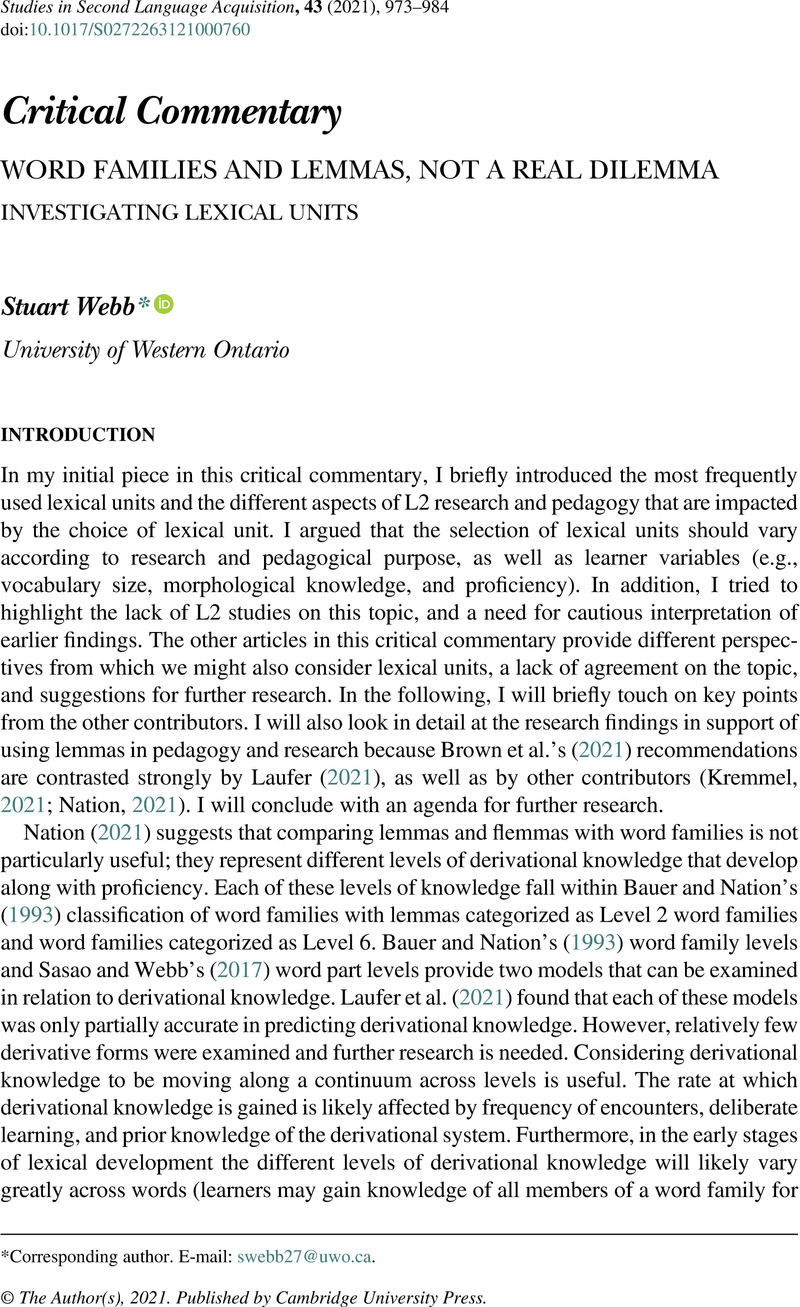Crossref Citations
This article has been cited by the following publications. This list is generated based on data provided by Crossref.
Finlayson, Natalie
Marsden, Emma
and
Anthony, Laurence
2023.
Introducing MultilingProfiler: An adaptable tool for analysing the vocabulary in French, German, and Spanish texts.
System,
Vol. 118,
Issue. ,
p.
103122.
Iwaizumi, Emi
and
Webb, Stuart
2023.
To What Extent Do Learner‐ and Word‐Related Variables Affect Production of Derivatives?.
Language Learning,
Vol. 73,
Issue. 1,
p.
301.
Sonbul, Suhad
El-Dakhs, Dina Abdel Salam
and
Masrai, Ahmed
2023.
Second language productive knowledge of collocations: Does knowledge of individual words matter?.
Studies in Second Language Acquisition,
Vol. 45,
Issue. 2,
p.
480.
Ha, Hung Tan
Le, Linh Thi Thao
Ho, Nam Thi Phuong
and
Trang, Nguyen Huynh
2023.
Measuring native‐speaker vocabulary size. PaulNation and AverilCoxhead, John Benjamins Publishing Company, Amsterdam/Philadelphia, 2021, xiii, 160 pp., Hardbound: ISBN 9789027208149, EUR 95.00; Paperback: ISBN 9789027208132, EUR 33.00; e‐Book: ISBN 9789027260291, EUR 95.00.
International Journal of Applied Linguistics,
Vol. 33,
Issue. 1,
p.
88.
Blázquez-Carretero, Miguel
2023.
Building a pedagogic spellchecker for L2 learners of Spanish.
ReCALL,
Vol. 35,
Issue. 3,
p.
321.
Volodina, Elena
Mohammed, Yousuf Ali
and
Tiedemann, Therese Lindström
2024.
Swedish word family resource.
ITL - International Journal of Applied Linguistics,
Milliner, Brett
Lange, Kriss
Matthews, Joshua
and
Umeki, Riko
2024.
Examining EFL learners’ comprehension of derivational forms: The role of overlap with base word knowledge, word frequency, and contextual support.
Language Teaching Research,






